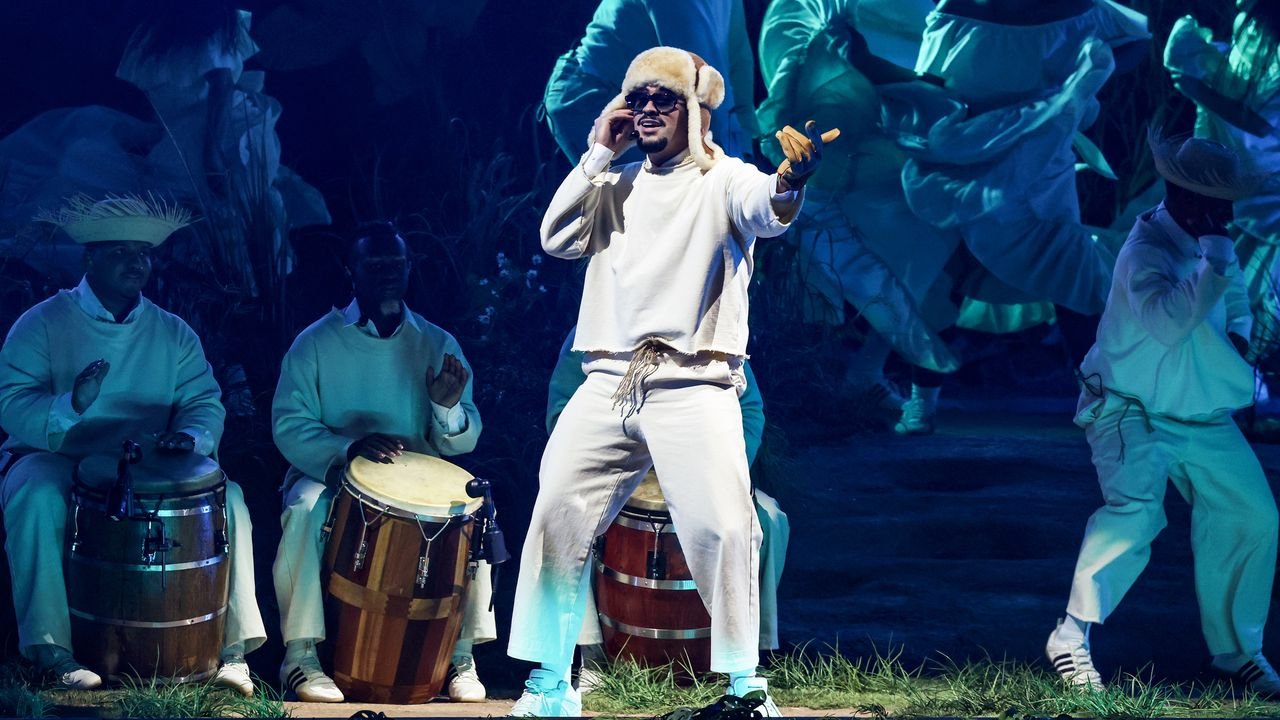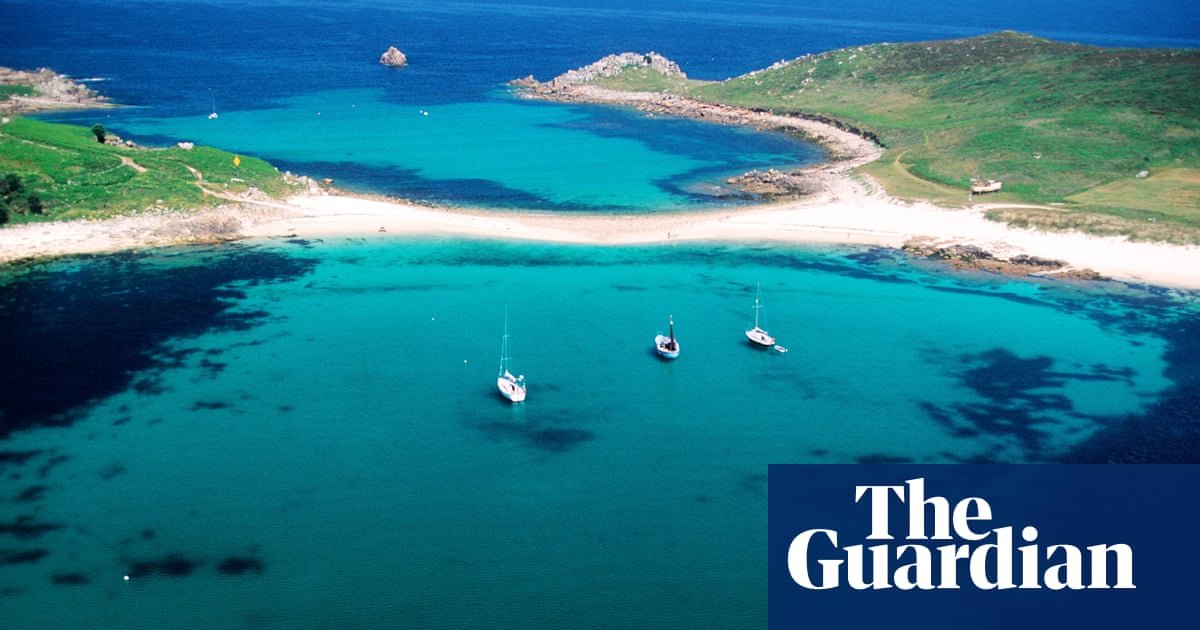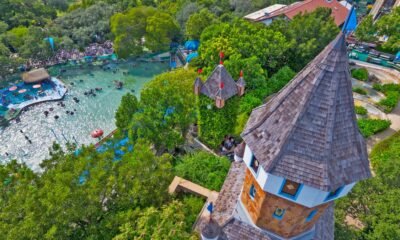Solo Travellers
The best solo escapes in the UK, inspired by Netflix’s Too Much

Following Lena Dunham’s hotly anticipated Netflix rom-com Too Much landing on screens, viewers have fallen hard for its raw, funny and all-too-relatable portrayal of heartbreak, healing and exploring a new city. But Jessica’s solo adventure to London isn’t just a TV fantasy – it’s a reflection of a growing cultural shift. Airbnb data reveals bookings for international solo trips have risen by nearly a third compared to last year.
Much like Jessica, more and more UK travellers are craving the freedom of exploring the world on their own terms. Women are leading the charge, with female solo bookings growing by over 30% YOY, compared to male solo travel bookings which grew only 12% over the same period.
Airbnb data also shows Gen Z have the most solo escapade wanderlust – with 18-24 year olds seeing a 32% YOY increase in searches for solo stays, higher than all other age groups.
Brits aren’t just crossing oceans to find themselves – Airbnb data shows the UK is the top trending solo destination, with cities like London, Bristol and York offering perfect backdrops for solo escapes.
Whether inspired by a break-up, or simply the urge to reset without the worry of accommodating to someone else’s itinerary, solo travel is no longer a niche pursuit – it’s a powerful way to unplug, recharge and reconnect with yourself.
To help travellers live out their ultimate Too Much moment this summer, Airbnb has revealed the top ten countries globally for solo travel, along with a curated list of stays in the UK’s most popular solo travel destinations for 2025 – some of which are in the show’s London filming locations.
From a vibrant East London flat to a tiny treehouse home for one in York, these Airbnb stays offer the perfect setting to romanticise your independence this summer.
Top 10 Most Searched Countries for Solo Travel on Airbnb:
- United Kingdom
- Spain
- Italy
- France
- United States
- Portugal
- Greece
- Thailand
- Ireland
- Netherlands
The top trending UK destinations & Airbnbs perfect for a ‘Too Much’ solo escape
London
Where to stay: Peckham Rye rooftop apartment
Live out your own Too Much moment in this airy, open-plan apartment, just a short drive from Nunhead’s Ivy House pub featured in the show. A perfect solo sanctuary for journaling, unwinding, and embracing that main-character energy.
Where to stay: Charming flat with a view in vibrant East London
Set in the heart of East London where much of Too Much was filmed, this characterful flat is perfect for solo exploring. Just two minutes from the Central Line, it’s your stylish launchpad for wandering the city at your own pace.
Bristol
Where to stay: Stylish one bedroom flat
A characterful Clifton flat, ideal for wandering the neighbourhood’s lively streets and hidden gems on your own terms.
Manchester
Where to stay: Trendy Apartment in the Northern Quarter
A stylish apartment in the heart of Manchester’s Northern Quarter, ideal for solo travellers seeking vibrant city life.
Brighton & Hove
Where to stay: Designer-owned chic loft
A stylish mews flat on a charming cobbled street, blending boho charm with designer touches. Relax surrounded by vintage textiles, quality linens, and a curated collection of books to get lost in.
Liverpool
Where to stay: Stylish Victorian home
A chic Victorian home close to Liverpool’s vibrant museums, music scene, and waterfront – perfect for solo explorers wanting the city’s best at their doorstep.
York
Where to stay: Tiny treehouse home for one
A secluded, treehouse nestled in nature – the perfect solo hideaway to rest, reflect and recharge.
Birmingham
Where to stay: Beautiful Edwardian flat with garden in Moseley
A stylish Edwardian flat with a garden, perfectly located for Moseley’s music, parks, and quick access to Birmingham city centre.
Glasgow
Where to stay: Hidden mews home next door to Kelvingrove Park
A beautifully designed house ideal for solo travellers seeking a stylish, peaceful city retreat close to museums, the university, and vibrant West End spots.
For solo travellers looking to dive into local culture, Airbnb offers thousands of Experiences across the world – all hosted by locals who know their city best.
Solo Travellers
A Bad Bunny Puerto Rico Guide Inspired By the Megastar’s Island Residency

Recommended listening: “Nuevayol.” La Disquera once served as the San Juan office for Fania Records, the pioneering salsa label founded in New York City—the city Bad Bunny sings about in the namesake song (with a fabulous sample of salsa hit “Un Verano en Nueva York”). At El Choli, keep an eye open for a pop-up of Toñitas, the iconic Boricua bar in Brooklyn that he name checks in the song.
La Factoría cocktail bar
A day tour of Old San Juan is practically mandatory for any first-time visitor; but stay a little while after dark to see it come alive. La Factoría is famed for its crafty cocktails, as well as the labyrinthine setup of the space. There are multiple rooms to peruse, each with its own style of music and dance; in the largest, you’ll find locals and visitors mingling on the dance floor to salsa, merengue, and bachata, while other rooms offer electronic music and reggaetón on the weekends. There’s even a special enclave for the lovers and the introverts, who may appreciate the intimacy of a low-lit and low-volume space.
Recommending listening: “Baile Inolvidable.” There are no salsa dance classes to be found here—just feel the rhythm and find your own way.
Lala restaurant
Trip to the mall, anyone? Beyond the Nordstrom and Tiffany’s, inside the ritzy Mall of San Juan is an upscale Puerto Rican dining experience worth the hype. Partially owned by Bad Bunny and his manager, Noah Assad, the picturesque restaurant boasts a globetrotting experience encapsulated in its menu. It’s ideal for those traveling in groups with conflicting palettes; at Lala, one friend’s craving for pan-fried gyoza and hamachi can peacefully co-exist with another’s hankering for sweet corn agnolotti.
Recommended listening: “Perfumito Nuevo.” Be like Bad Bunny’s co-star RaiNao—get dressy, try out that new perfume you just bought.
Manzana de Java restaurant
“We believe that Puerto Rico, and the Caribbean, have more in common with Southeast Asia than people think,” says Juan Camilo Becerra, manager of Manzana de Java: an Antillean-meets-Asian fusion kitchen, located two blocks south of the Playa del Pueblo. Repurposed from an old ramen shop, this one-of-a-kind restaurant fashions tapas from the intersections of two tropical regions. Highlights from the menu include ceviche served in a cacao pod, lionfish chicharrones served with a green curry aioli, and a goat meat fricasse with tamarind and cashews.
Recommended listening: “Voy a Llevarte a PR.” Much like the song, which Bad Bunny dedicates to a faraway love interest, Manzana de Java is both sweet and spicy.
La Placita de Santurce
What appears to be a farmer’s market during the week transforms into a full-on bacchanal on the weekends. Nestled in the neighborhood of Santurce, this plaza is lined with bars blasting reggaetón—and the people spilling out of them to dance in the cobblestone streets. Start your night with Caribbean snacks at Jungle Bird and roam as you wish. On one block, you’ll find whole families singing karaoke outdoors; around the corner, you’ll see old men drinking beer, playing dominoes, and watching salsa videos on a big-screen TV. There’s also an abundance of murals to take drunken photos with, including a special Bad Bunny portrait celebrating his role in Puerto Rican music and culture.
Recommended listening: “Debí Tirar Más Fotos.” This is Puerto Rico at its best; in music, food and community.
Solo Travellers
‘Unlike anywhere else in Britain’: in search of wildlife on the Isles of Scilly | Isles of Scilly holidays

At Penzance South Pier, I stand in line for the Scillonian ferry with a few hundred others as the disembarking passengers come past. They look tanned and exhilarated. People are yelling greetings and goodbyes across the barrier. “It’s you again!” “See you next year!” A lot of people seem to be repeat visitors, and have brought their dogs along.
I’m with my daughter Maddy and we haven’t got our dog. Sadly, Wilf the fell terrier died shortly before our excursion. I’m hoping a wildlife-watching trip to the Isles of Scilly might distract us from his absence.
One disembarking passenger with a cockapoo and a pair of binoculars greets someone in the queue. “We saw a fin whale,” I hear him say. “Keep your eyes peeled.”
This is exciting information. The Scillonian ferry is reputedly a great platform for spotting cetaceans and it’s a perfect day for it – the sea is calm and visibility is superb. From the deck, the promontory that is Land’s End actually seems dramatic and special, in a way that it doesn’t from dry land. There are several people armed with scopes and sights who are clearly experienced and observant. The only thing lacking is the animals. Not a single dolphin makes an appearance, never mind the others that make regular summertime splashes: humpbacks, minke, sunfish, basking sharks and, increasingly, bluefin tuna.
Arriving in Scilly by ship is worth the crossing: wild headlands, savage rocks, white sand beaches, sudden strips of transcendentally turquoise ocean interspersed with the bronzed pawprints of kelp. Of course, it can be thick mist and squalls, but we’re in luck, the islands are doing their best Caribbean impersonation. Hugh Town, the capital of St Mary’s, is built on the narrow isthmus between two rocky outcrops. It’s a quirky, independent town with the kind of traffic levels our grandparents would recognise.
Up the hill, from the terrace of the Star Castle Hotel, we can see all the islands spread out around us, and handily there’s a lady with a friendly labrador who gives us a pithy summary of each. St Martin’s: “Beach life.” Tresco: “The royals love it.” St Agnes: “Arty.” Bryher: “Wild and natural.”
Bryher is our big wildlife destination because the plan is to rent kayaks there and paddle to the uninhabited Samson island, which is a protected wildlife area. I’m banking on Samson for wildlife now that the whales didn’t show up, but first we’re going to explore St Agnes with Vickie from the Isles of Scilly Wildlife Trust.
After a short ferry ride from St Mary’s quay, we stroll around St Agnes and across a short sand spit, a tombolo, to its neighbour, Gugh. Vickie leads us up a heather-covered hillside next to an impressive stack of pink granite boulders. “St Agnes and Gugh used to have a rat problem,” she tells us. “There were an estimated 4,000 that had destroyed the breeding populations of both Manx shearwaters and storm petrels. We’re pretty sure we’ve eradicated them now and the bird populations are rising fast.”
She leans over a small burrow under a lichen-crusted rock, and sniffs. “Yes, that’s storm petrel – they have a distinctive aroma.” Using her phone, she plays a series of cackles and squeaks down the hole. No response.
I ask Vickie about the archipelago’s endemic species. The Scilly bee? “Hasn’t been seen for many years.” She chuckles. “What makes the islands special is often what we don’t have. There are no magpies or buzzards, no foxes or grey squirrels. Those absences are important.”
What they don’t have in terms of fauna, they certainly make up for in flora. The lanes and paths of St Agnes are a ravishing spectacle: agapanthus and honeysuckle, huge spires of echium and smooth succulent aeoniums from the Canary Islands. In this frost-free environment, all kinds of subtropical plants thrive, making the islands quite unlike anywhere else in the British Isles. Dotted among all this fecundity are artists’ studios, galleries, a pub and a community hall where there’s a wonderful display of shipwreck souvenirs: East India Company musket parts, skeins of silk, porcelain and perfume.
Back on St Mary’s, we swim and spot a seal. But if we imagine our luck is changing, it’s not. Next morning we are down on the quayside, bright and early for the boat to Bryher. “It just left,” says the ticket seller. “We did post the change last night. Very low tide. Had to leave 15 minutes early.”
“When is the next one?”
“There isn’t one.”
The islands, I should have known, are run by the tides. Be warned.
Without any time to think, we jump on the Tresco boat. A fellow passenger offers sympathy. “Last week we missed the boat from St Martin’s and had to spend the night there. It was great.”
after newsletter promotion
I relax. She is right. The best travel adventures come unplanned.
The low tide means we land at Crow Point, the southern tip of Tresco. “Last return boat at five!” shouts the boatman. We wander towards a belt of trees, the windbreak for Tresco Abbey Garden. The eccentric owner of the islands during the mid-19th century, Augustus Smith, was determined to make the ruins of a Benedictine abbey into the finest garden in Britain. Having planted a protective belt of Monterey pine, his gardeners introduced a bewildering array of specimen plants from South Africa, Latin America and Asia: dandelions that are three and a half metres tall, cabbage trees and stately palms. Just to complete the surreal aspect, Smith added red squirrels and golden pheasants, which now thrive.
Now comes the moment, the adventure decision moment. I examine the map of the island and point to the north end: “It looks wilder up there, and there’s a sea cave marked.”
We set off. Tresco has two settlements: New Grimsby and Old Grimsby, both clutches of attractive stone cottages decked with flowers. Beyond is a craggy coast that encloses a barren moorland dotted with bronze age cairns and long-abandoned forts. At the north-eastern tip we discover a cave high on the cliffside. Now the low tide is in our favour. We clamber inside, using our phone torches. A ramp of boulders takes us down into the bowels of the Earth, and to our surprise, where the water begins, there is a boat, with a paddle. Behind it the water glitters, echoing away into absolute darkness.
We climb in and set off. Behind us and above, the white disc of the cave entrance disappears behind a rock wall. The sound of water is amplified. After about 50 metres we come to a shingle beach. “How cool is that?” says Maddy. “An underground beach.”
We jump out and set off deeper into the cave, which gets narrower and finally ends. On a rock, someone has placed a playing card: the joker.
Later that day, having made sure we do not miss the last boat back, we meet Rafe, who runs boat trips for the Star Castle Hotel. He takes pity on us for our lack of wildlife. “Come out on my boat tomorrow morning and we’ll see what we can find.”
Rafe is as good as his word. We tour St Martin’s then head out for the uninhabited Eastern Isles. Rafe points out kittiwakes and fulmars, but finally we round the rock called Innisvouls and suddenly there are seals everywhere, perched on rocks like altar stones from the bronze age. “They lie down and the tide drops,” says Rafe. “These are Atlantic greys and the males can be huge – up to 300kg.”
Impressive as the seals are, the islands are better known for birds, regularly turning up rarities. While we are there, I later discover, more acute observers have spotted American cliff swallows that have drifted across the Atlantic, various unusual shearwater species and a south polar skua.
Next day is our return to Penzance, and it’s perfect whale-watching weather. People are poised with binoculars and scopes, sharing tales of awesome previous sightings: the leaping humpbacks, the wild feeding frenzies of tuna, and the wake-riding dolphins. Nothing shows up. I complain, just a little, about our lack of wildlife luck. Maddy is playing with a pair of terriers. “The thing with Wilf was he was always content with whatever happened,” she says. I lounge back on the wooden bench on the port side, enjoying the wind, sun and sound of the sea. I’m channelling the spirit of Wilf. Be happy. Whatever. It’s a lovely voyage anyway. And that’s how I missed the sighting of the fin whale off the starboard side.
The Star Castle Hotel on St Mary’s has double rooms from £249 half-board off-season to £448 in summer; singles from £146 to £244. Woodstock Ark is a secluded cabin in Cornwall, handy for departure from Penzance South Pier (sleeps two from £133 a night). The Scillonian ferry runs March to early November from £75pp. Kayak hire on Bryher £45 for a half day, from Hut 62. For further wildlife information check out the ios-wildlifetrust.org.uk
Solo Travellers
Freedom With Purpose and Poetry on Roads | Ranchi News

-

 Brand Stories6 days ago
Brand Stories6 days agoBloom Hotels: A Modern Vision of Hospitality Redefining Travel
-

 Brand Stories1 day ago
Brand Stories1 day agoCheQin.ai sets a new standard for hotel booking with its AI capabilities: empowering travellers to bargain, choose the best, and book with clarity.
-

 Destinations & Things To Do7 days ago
Destinations & Things To Do7 days agoUntouched Destinations: Stunning Hidden Gems You Must Visit
-

 AI in Travel7 days ago
AI in Travel7 days agoAI Travel Revolution: Must-Have Guide to the Best Experience
-

 Brand Stories3 weeks ago
Brand Stories3 weeks agoVoice AI Startup ElevenLabs Plans to Add Hubs Around the World
-

 Brand Stories2 weeks ago
Brand Stories2 weeks agoHow Elon Musk’s rogue Grok chatbot became a cautionary AI tale
-

 Destinations & Things To Do1 day ago
Destinations & Things To Do1 day agoThis Hidden Beach in India Glows at Night-But Only in One Secret Season
-

 Asia Travel Pulse3 weeks ago
Asia Travel Pulse3 weeks agoLooking For Adventure In Asia? Here Are 7 Epic Destinations You Need To Experience At Least Once – Zee News
-

 AI in Travel3 weeks ago
AI in Travel3 weeks ago‘Will AI take my job?’ A trip to a Beijing fortune-telling bar to see what lies ahead | China
-

 Brand Stories3 weeks ago
Brand Stories3 weeks agoChatGPT — the last of the great romantics







You must be logged in to post a comment Login